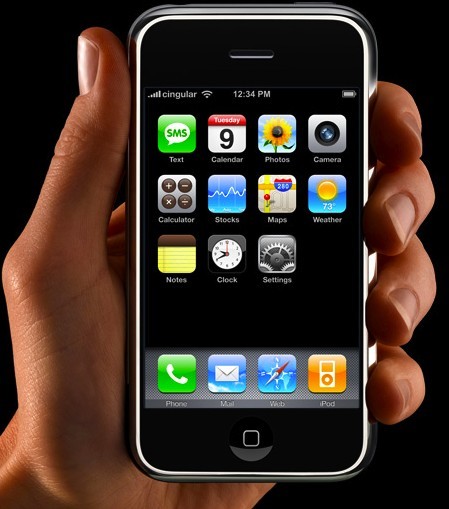by: Jason Mick

Looking down the rabbit hole at the iPhone 3G's issues
The iPhone 3G is one of Apple's flagship products. Many would argue it stands far above its most able competitors in terms of capabilities. Yet, the iPhone has been having some problems.
The iPhone's problems began when users started to become frustrated with dropped calls and poor call quality. They took their frustrations and poured them out on Apple's message boards. Sources in Apple said that CEO Steve Jobs was unconcerned with the problems as he said they likely only affected 2 percent of iPhone customers, or about 60,000 people.
Then came the report from Sweden's foremost tech weekly Ny Teknik, saying that it had test the iPhone's 3G and it fell well below the standards set for 3G, and should not be certified and as a 3G product. Many, including sources inside Apple, seemed to place the blame on the Infineon chipset in the phone.
Further complicating the issue are new tests from Göteborgs-Posten, a Swedish newspaper, which show the phone to be only slightly short of its competitors in terms of quality. So, barring wildly varying batches of hardware, these reports paint an unclear picture of what is wrong with the iPhone and how badly it is wrong.
The final bit of confusion was the update to the iPhone's firmware. The 2.0.2 update said it had "bug fixes" for the iPhone, but gave no specific details. Apple's Jennifer Bowcock did tell USA Today that "the software update improves communication with 3G networks". With such a hazy picture, a new inside source from AT&T steps in to try to clarify exactly what the fix did according to Roughly Drafted.
Basically the update "fixed power control on the mobile" according to the source. To understand what they're going to say next, you must first know a bit about AT&T's jargon for UMTS -- the technology it uses to deliver its 3G network. In the technology, phones are referred to as user equipment, "UE" for short. The base transceiver station towers are known as "Node B".
With this jargon in mind, the AT&T source explains:
In UMTS power control is key to the mobile and network success. If the UE requires too much downlink power then the base station or Node B can run out of transmitter power and this is what was happening. As you get more UEs on the cell, the noise floor rises and the cell has to compensate by ramping up its power to the UEs. If the UE power control algorithm is faulty then they will demand more power from the cell than is necessary and with multiple users this can cause the cell transmitter to run out of power. The net result is that some UEs will drop their call. I have seen the dropped call graphs that correspond to the iPhone launch and when the 2.0.2 firmware was released. The increase in dropped calls, (were the result of) dropped calls due to a lack of downlink power.
In essence, the iPhone is asking for a stronger signal than it needs. In areas with lots of users, some or all of whose phones are doing this, calls start to get dropped and signal quality drops. This all follows with the conclusions the media had reached -- the problems were somehow correlated to user distribution and seemed puzzlingly to be both with AT&T's network, and with the hardware.
The source continues:
The power control issue will also have an effect on the data throughput, because the higher the data rate the more power the Node B transmitter requires to transmit. If the UEs have poor power control and are taking more power than is necessary then it will sap the network’s ability to deliver high speed data. This is one of the reasons why AT&T has been sending text messages to users to persuade them to upgrade to the 2.0.2 software. In a mixed environment where users are running 2.0, 2.0.1, and 2.0.2, the power control problems of 2.0 and 2.0.1 will affect the 2.0.2 users. It is not the network that is fault but the interaction of the bad power control algorithm in 2.0 and 2.0.1 software and the network that is at fault. The sooner everybody is running 2.0.2 software the better things will be. Having seen the graphs the 2.0.2 software has already started to make difference.
Since transmitting lots of data takes lots of transmission power, and transmission power was unnecessarily being raised above that necessary for the use levels on phones, the network in areas of heavy use was unable to handle high speed data.
This revelation offers up two key pieces of insight. The first -- this explains why there was little difference seen among individual users in the news media who downloaded and tested the update. The updates did not majorly change the phone on an individual basis; rather they changed how the phone interacted with the network in a small way.
Secondly, the quality of the fix is directly proportional to how many users download it. There are still many users running old firmware, so problems are continuing. AT&T is going as far as to send users text messages to try to get them to download the fix.
With this latest update from within AT&T, we are presented with a picture of a company struggling with a serious technical issue. It appears it is well on the way of solving the problems, but the rub is that the solution will only come if users are willing to cooperate.
